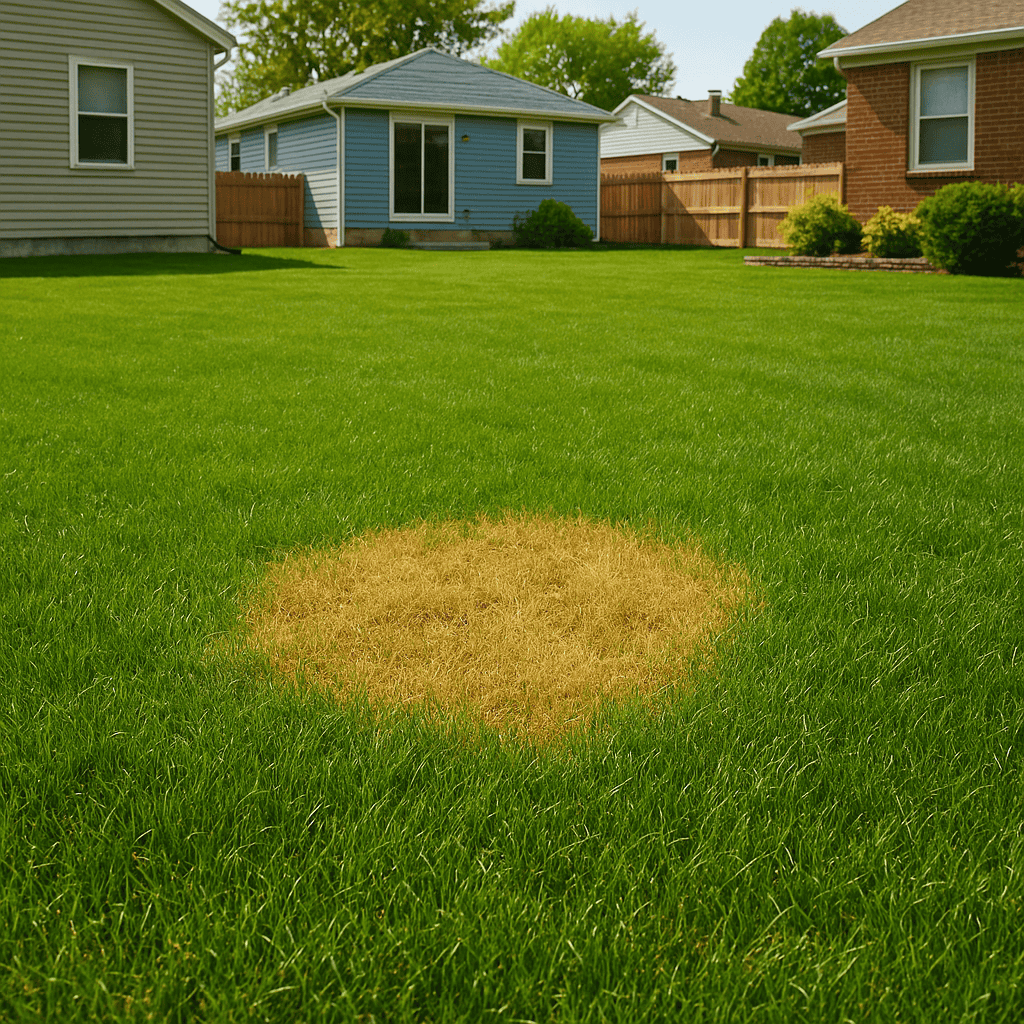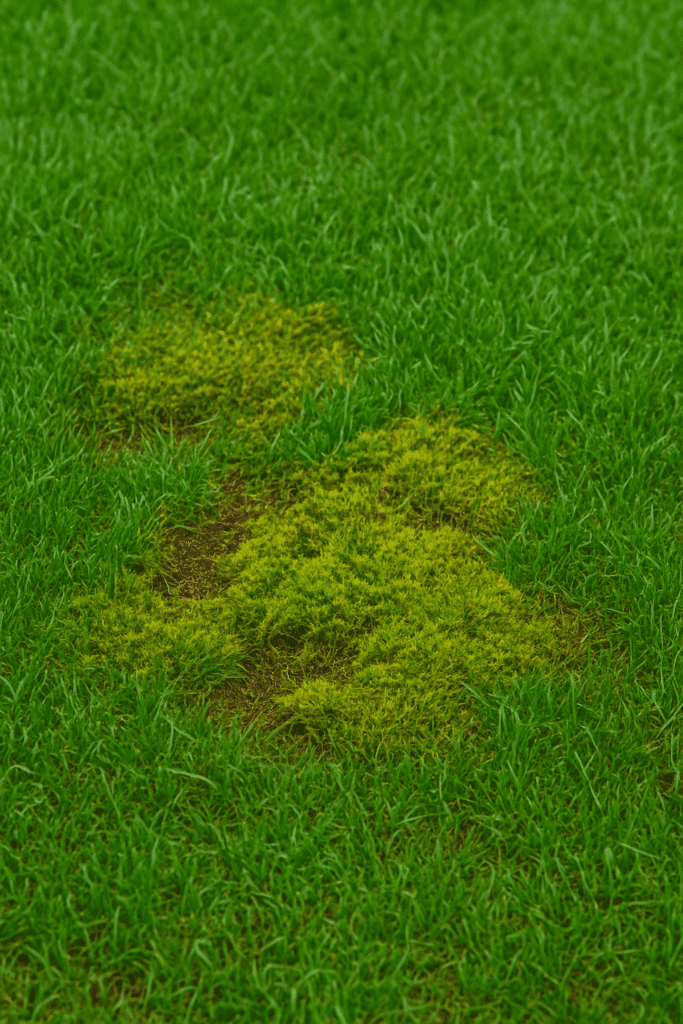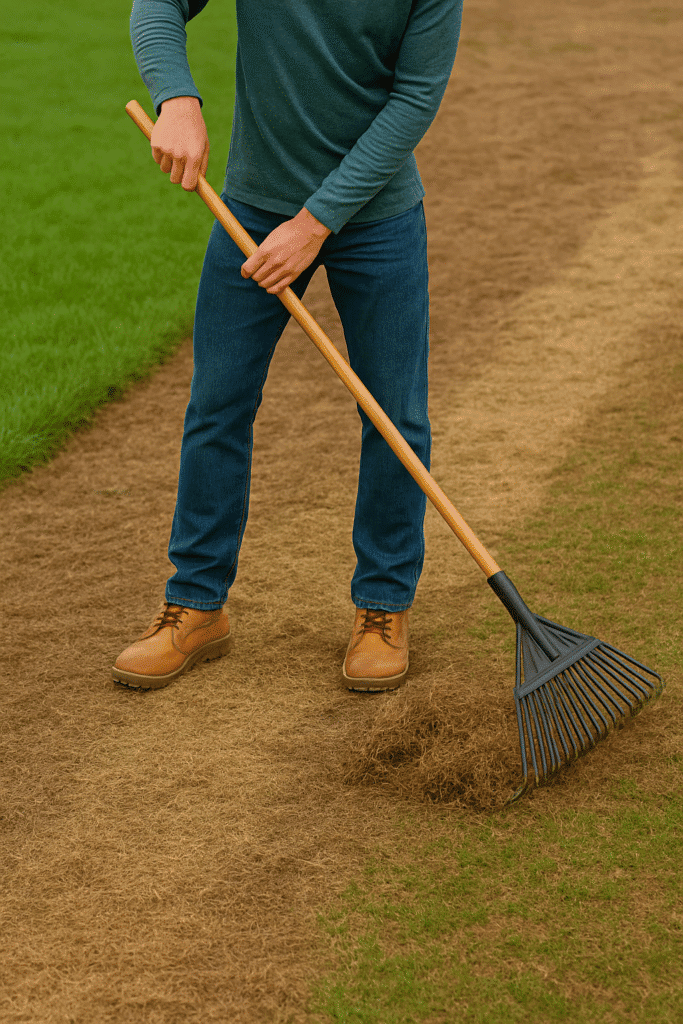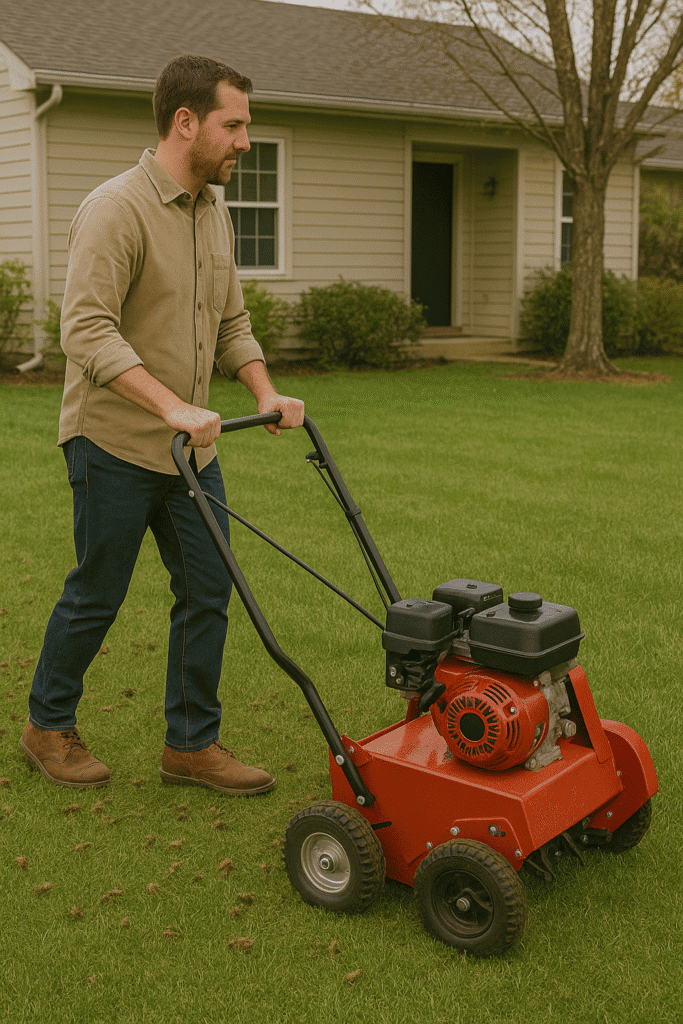Common Lawn Problems in Fall (And How to Fix Them Fast Before Winter Hits)
Fall is to be a time of recovery for your lawn with cooler temps, less foot traffic, and more consistent rainfall should make it the perfect season for lush, green growth. But for many homeowners, this season brings unexpected headaches: yellowing grass, stubborn brown patches, and even moss creeping in from the shadows.
If that sounds familiar, you’re not alone. These are common lawn problems in fall.
Table of Contents
I’ll never forget the year we decided to overseed the lawn in October without checking the weather first. A surprise early frost ruined most of the seedlings, which left a yard full of bare patches and disappointment. That was the moment I realized fall lawn care is more than just raking leaves …it’s about understanding your soil, anticipating weather shifts, and avoiding those common (and costly) mistakes.
Whether your grass is turning yellow, you’re battling fungus, or you’re simply unsure about your next steps, you’ll find everything you need here to get your lawn winter-ready.

Brown Patches: What They Really Mean
Seeing brown patches in your lawn during the fall can be frustrating, especially after you’ve spent the summer trying to keep things green. While it’s easy to assume the grass is just going dormant, brown spots are often a sign of something more serious.
Lawn fungus, like brown patch disease, thrives in cool, moist environments and is a common lawn problem in fall. Other causes might include compacted soil, pet urine damage, or even dull mower blades that tear instead of cut.
To fix brown patches effectively, start by identifying the root cause. If fungus is to blame, applying a fungicide early can stop it from spreading. Compacted soil benefits from aeration, which loosens it up and helps roots access oxygen and nutrients. Reseeding patchy areas and improving drainage will also help bring your lawn back to life before winter.
The Sneaky Spread of Fall Lawn Fungus
Fungus loves fall. The combination of damp soil, shorter daylight hours, and chilly nights creates the perfect environment for fungal diseases to flourish.
Lawn fungus in autumn is one of the most common fall lawn care problems, often showing up as brown or gray rings, a powdery film on grass blades, or even slimy, matted areas after rain, which are all telltale signs that fungus has moved in.
The good news is that prevention goes a long way. Watering your lawn early in the day allows the grass to dry out before nightfall, reducing moisture buildup. Be sure to keep fallen leaves off your lawn too because they can trap moisture and block airflow, making conditions even more favorable for fungus.
If fungus has been a recurring problem for your yard, applying a preventative fungicide in early fall can make a big difference.

Moss in the Fall: More Than Just a Shady Problem
Moss often feels like a fall nuisance that comes out of nowhere, especially in shaded areas of the yard. But it usually signals a deeper issue. When your lawn has poor drainage, low soil pH, or thinning grass, moss tends to move in and take over. Once it’s there, it competes with your turfgrass for space and nutrients.
Controlling moss starts with understanding your soil. A simple soil test will reveal if the pH is too low (acidic), which is a common contributor to moss growth. Lime can be used to raise the pH if needed. Improving drainage and reducing shade when possible will also help, along with applying iron-based moss control products. To keep moss from returning, reseed bare or thin spots with a shade-tolerant grass blend and focus on encouraging strong, dense turf.
How to Repair Lawn Damage After Fall
By late fall, your lawn may be looking worse for wear. Between summer stress, fall pests like grubs, and foot traffic from seasonal activities, it’s common to see thinning areas or patches of dead grass. The good news is that fall is actually the ideal time to repair lawn damage… if you act before the first hard frost.
Start by raking away any thatch or dead grass and loosening up the soil in bare areas. Overseeding with a cool-season grass seed blend will help fill in the gaps, especially when paired with a light layer of compost to improve germination. Regular watering will support new growth but be sure not to overdo it. Consistent moisture (not soggy soil) is the key to successful lawn repair in the fall.

Why Does My Grass Turn Yellow in the Fall?
It’s not uncommon to see grass lose its vibrant green color as fall progresses. In some cases, this is just part of the natural transition into dormancy. But if your lawn is turning yellow too early or unevenly, it could indicate an underlying issue.
Nitrogen deficiency is a frequent cause, as fall is when grass uses nutrients to store energy for winter. If your soil lacks nitrogen, the grass can’t photosynthesize properly, leading to yellowing blades. Overwatering can also suffocate the roots, while frost damage may cause discoloration if temperatures drop suddenly. In some instances, lawn rust, which is a fungal disease may be the culprit, especially if you notice orange or yellow powder on your shoes after walking through the grass.
Applying a balanced fall fertilizer and adjusting your watering routine can help restore color and strength to your lawn before winter. Just be sure to fertilize early enough in the season to avoid stimulating growth that will be killed by frost.
Avoid These Common Fall Lawn Care Mistakes
Many common lawn problems in fall often stem from well-meaning mistakes. One of the most common is fertilizing too late in the season, which can actually make your lawn more vulnerable to winter damage. Overwatering is another trap, especially when rainfall is already high and evaporation is low. And letting leaves pile up on the lawn? That’s practically an invitation for fungus and pests.
Another mistake is skipping aeration or dethatching because the lawn “looks fine.” Fall is actually one of the best times to aerate, giving roots more access to nutrients before winter. And don’t forget that cutting your grass too short or letting it grow too tall can both stress it out before the cold sets in.

Final Thoughts: Get Ahead of Fall Lawn Issues
Catching lawn problems in the fall is like putting on a winter coat before the first snow because it sets you up for success before the hard season arrives. By understanding the signs of stress, disease, and damage, and knowing how to address them, you’re not just treating symptoms ….you’re building a stronger, more resilient lawn from the ground up.
Whether you’re battling brown patches, moss, or just the urge to ignore your yard until spring, a little extra effort now goes a long way. Your future self (and your future lawn) will thank you.
Want a little help staying on track? Call GrowsMows
GrowsMows is here to help.. We’re a local, teen-owned lawn care business right here in Lock Haven, offering affordable and reliable lawn care services with friendly, hard-working service you can count on.
Call or text 272-261-0581 today to get on our schedule or request a free estimate.
Email: Cole@GrowsMows.com
Serving: Lock Haven, PA and nearby neighborhoods
Follow us: Facebook and Instagram